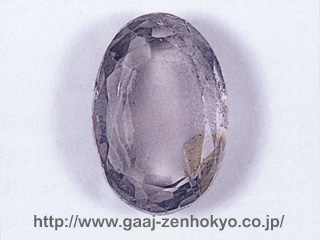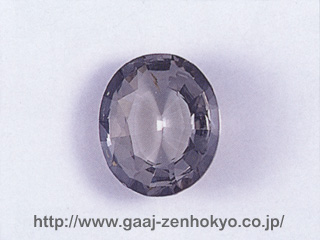|
||||||
|
GAAJ laboratory recently has identified eleven pieces of Musgravite. Their gemmological properties and laboratory analytical techniques required to identify this material are introduced here.
Musgravite is a silicate mineral whose main ingredients are beryllium (Be), magnesium (Mg) and aluminium (Al), and belongs to the same mineral group as taaffeite. Both gems had been thought polytype (crystals possessing layered structure; each of the structure is the same but their cycle along the layering direction is different), however, from studies to date they are now assumed independent varieties that have different chemical composition and crystal structure. @@It was named emusgravitefafter the area Musgrave in Australia from where the material was first found. The musgravite was later found also in Greenland and Madagascar, but neither of them produces gem quality material. Two pieces of faceted gem-quality musgravite from Sri Lanka were reported firstly in 1993. Several reports of identifying gem-quality musgravite followed that, but the number of identified musgravite only reaches to eight in total so far, and most of them are less than 1 carat in size. No one, to the authorfs knowledge, was reportedly identified in Japan. One piece of the sample we obtained this time as a musgravite, together with 84 faceted pieces requested by our client to be identified as taaffeite or musgravite, were subjected to standard gemmological tests, UV-visible spectrophotometry and Raman spectral analysis, and 57 pieces of them were tested semi-quantitative chemical analysis by EDXRF. Two pieces of them were further tested by X-ray powder diffraction analysis. The results revealed that combination of UV-visible spectral analysis, Raman spectroscopy and semi-quantitative chemical analysis by EDXRF can identify musgravite non-destructively and accurately. The number of musgravite identified by our method this time was 11 pieces, including a piece of 4.5ct (the largest piece in the world to the authorfs knowledge). Technical report on identification of musgravite and taaffeite was addressed at annual meeting of the Gemmological Society of Japan in 2006 that was held at Kobe Design University on 22nd July. |
||||||

